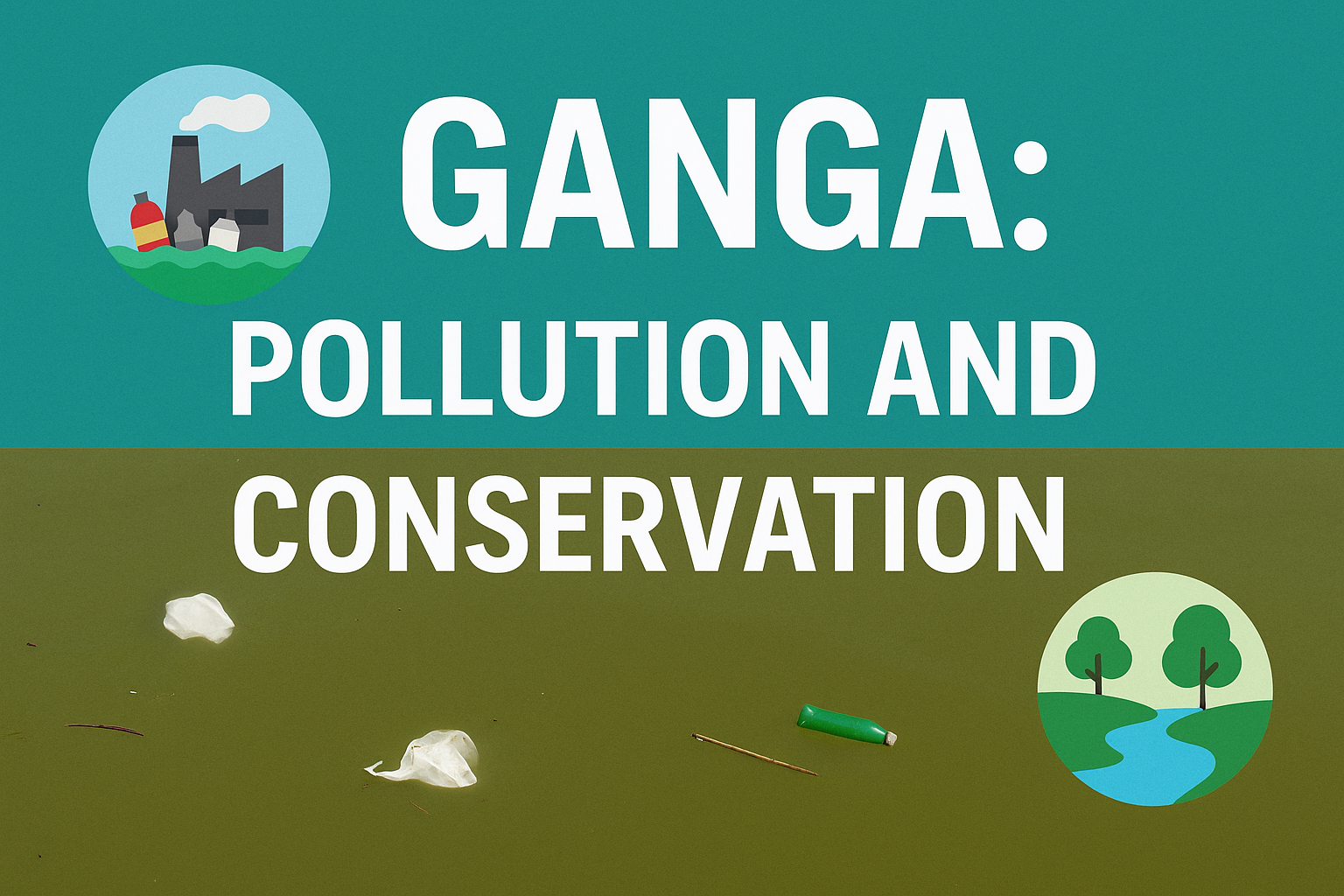Ganga River Pollution: Facts, Challenges, and Conservation Efforts
The Ganga River, one of the most sacred and important rivers in India, faces a serious pollution crisis. This article explores the facts about its pollution, the challenges it faces, and the efforts being made to conserve this vital waterway.
1. Facts about Ganga River Pollution
- 🌊 The Ganga is about 2,525 km long and supports over 400 million people living along its banks.
- 🏞️ It is considered a holy river in Hinduism and plays a crucial role in agriculture, drinking water, and industry.
- 🏭 Nearly 1,100 million liters of untreated sewage and industrial waste are dumped into the river every day.
- 🐟 Pollution has caused severe damage to aquatic life, including the endangered Ganges river dolphin.
- 🚰 Despite efforts, water quality in many stretches remains highly polluted with pathogens, chemicals, and heavy metals.
2. Challenges Causing Ganga Pollution
- 🏘️ Sewage Disposal: Most cities and towns along the Ganga lack adequate sewage treatment facilities. Untreated domestic waste flows directly into the river.
- 🏭 Industrial Waste: Factories release toxic chemicals, dyes, and heavy metals without proper treatment.
- 🚮 Religious and Cultural Practices: Immersion of idols, ashes, and human remains adds organic and chemical pollutants.
- 🐄 Agricultural Runoff: Use of pesticides and fertilizers washes into the river, leading to eutrophication.
- 🌡️ Climate Change: Reduced flow during dry seasons concentrates pollutants, worsening water quality.
- 🏞️ Encroachment: Illegal construction and sand mining disrupt the river’s natural flow and ecosystem.
3. Effects of Ganga Pollution
- ⚠️ Increased waterborne diseases like cholera, dysentery, and typhoid among local populations.
- 🐢 Loss of biodiversity, threatening fish, turtles, and endangered species like the river dolphin.
- 🌱 Damage to agriculture due to polluted irrigation water affecting soil health.
- 💧 Unsafe drinking water impacts millions, forcing reliance on expensive purification methods.
- 🌍 Overall degradation of the river ecosystem, reducing its ability to self-purify and sustain life.
4. Conservation Efforts to Save the Ganga
- 🇮🇳 Namami Gange Programme: Launched by the Indian government, this flagship initiative aims to reduce pollution and conserve the river through sewage treatment plants, riverfront development, and public awareness.
- 🏭 Industrial Regulation: Stricter enforcement of pollution control laws for factories discharging waste into the river.
- 💧 Sewage Treatment Plants (STPs): Construction and upgrade of STPs to treat domestic sewage before it reaches the river.
- 🌳 Afforestation and Riverbank Protection: Planting trees along the banks to reduce soil erosion and improve water quality.
- 👨👩👧👦 Community Engagement: Educating local communities and involving religious leaders to reduce pollution from rituals.
- 🔬 Scientific Monitoring: Continuous water quality testing and research to track progress and identify pollution hotspots.
5. What More Needs to Be Done?
- ⚙️ Improve infrastructure for sewage and industrial waste treatment across all towns and cities.
- 🛑 Strictly stop illegal dumping and enforce environmental laws more effectively.
- 🚰 Promote water conservation and reduce over-extraction from the river.
- 📢 Increase public awareness campaigns about the importance of keeping the Ganga clean.
- 🌐 Encourage collaboration between government, NGOs, scientists, and communities for sustainable solutions.
Conclusion
The Ganga River is not only a symbol of India’s culture and spirituality but also a lifeline for millions. Protecting it from pollution is essential for environmental health, economic development, and public well-being. Through combined efforts of government initiatives, community participation, and sustainable practices, the Ganga can be restored to its pure and vibrant state.
